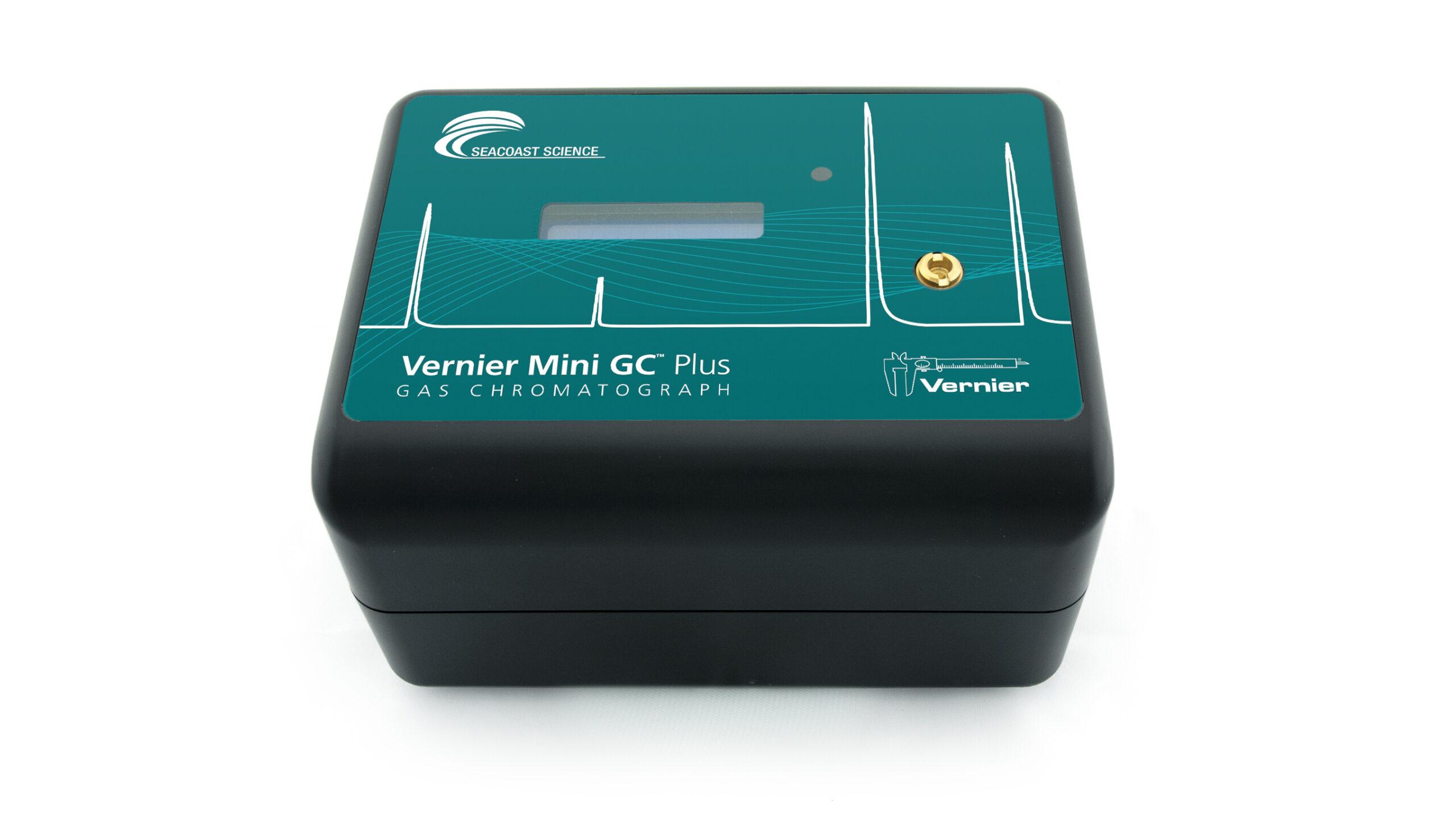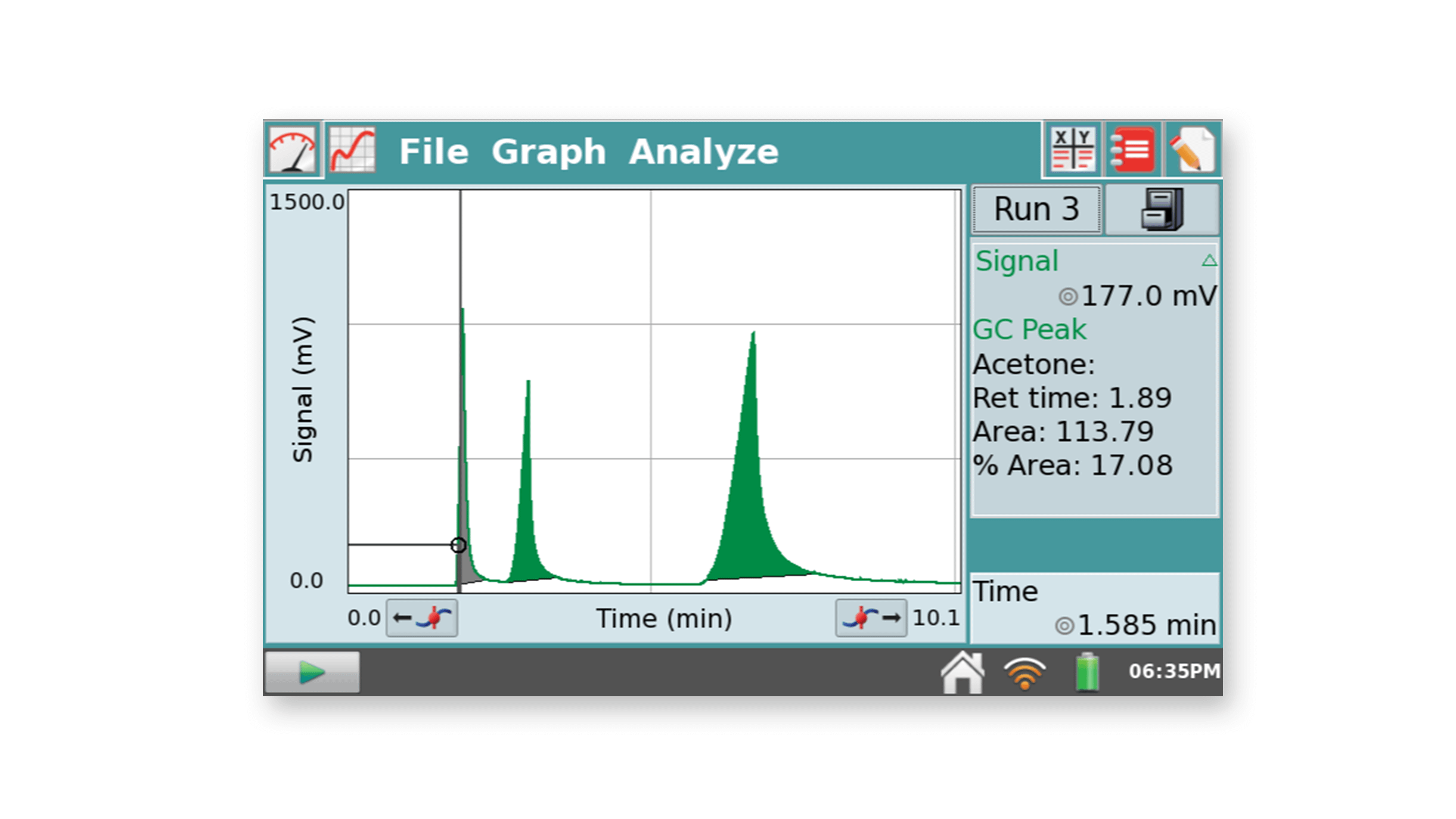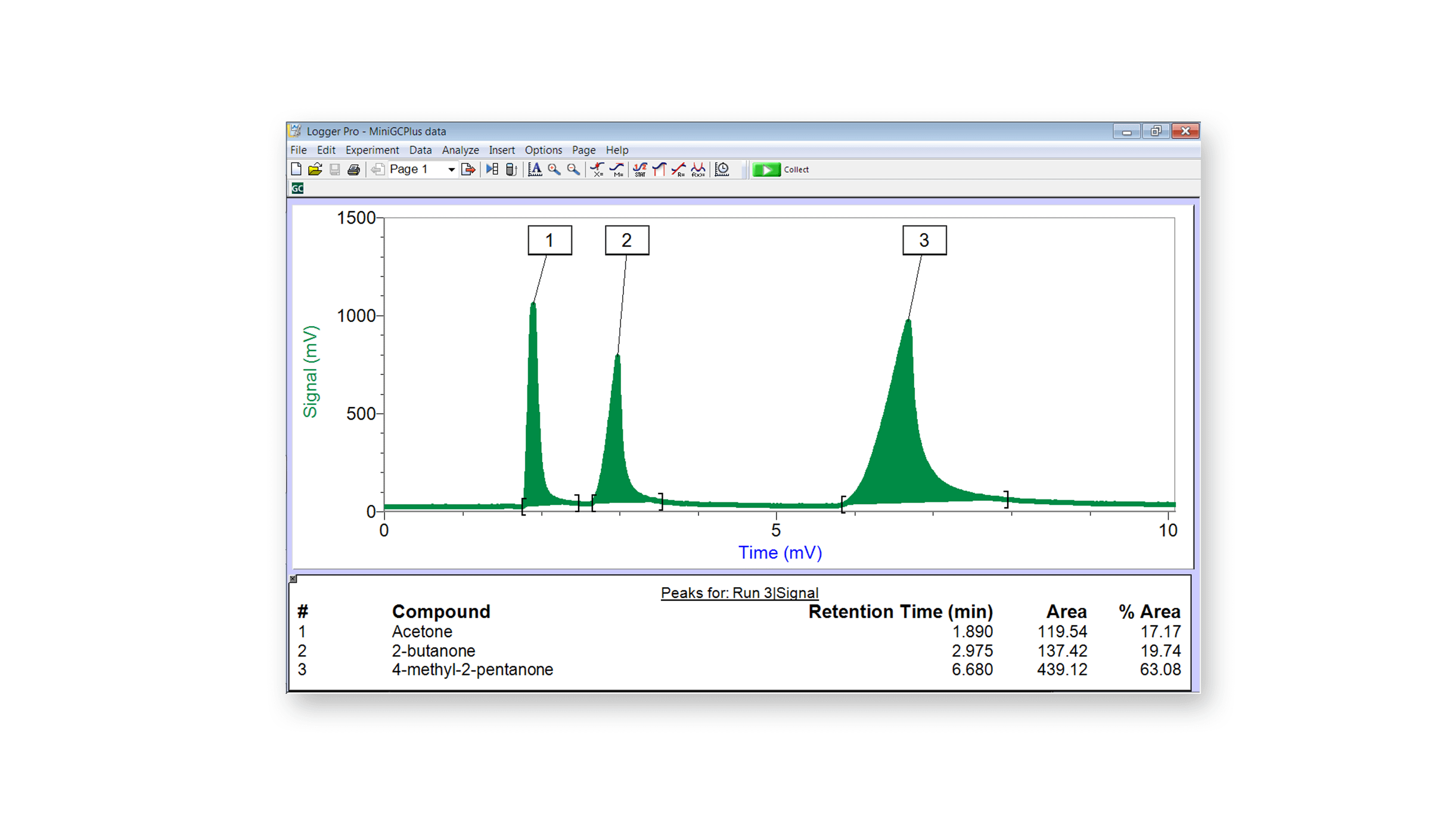Features
The Mini GC Plus can detect more compounds than the original Mini GC. The features that make this possible include:
- The maximum temperature of the column is 160°C, offering more flexibility in designing temperature profiles.
- The MEMS chip sensor can be set at either of two levels of sensitivity.
- Standard sensitivity mode works well for polar compounds such as: ketones, alcohols, and esters.
- High sensitivity mode works well for compounds such as halogenated alkanes and substituted aromatics, as well as mixtures with one or more compound of low concentration.
Use room air as the carrier gas
Developed by Seacoast Science, the Mini GC Plus uses an efficient, software-controlled internal pump system. This design allows it to use room air as the carrier gas.
Use Vernier’s award-winning software for column control, collection, and peak integration
With either Logger Pro or the LabQuest App, peak integration analysis and retention-time determination are built right into the software.
Classes of compounds that can be used
| COMPOUND TYPE | TYPICAL COMPOUNDS | RANGE OF ACCEPTABLE BOILING POINTS |
|---|---|---|
| Alcohols | C1 – C6 | 50 – 175°C |
| Aldehydes | C1 – C8 | 50 – 175°C |
| Amides | C3 – C4 | 150 – 250°C |
| Polar-Substituted Aromatic Hydrocarbons | C6 – C12 | 100 – 150°C |
| Carboxylic Acids | C1 – C4 | 100 – 150°C |
| Esters | C2 – C10 | 30 – 200°C |
| Ethers | C2 – C8 | 30 – 110°C |
| Heterocycles | C5 – C8 | 100 – 150°C |
| Halogenated hydrocarbons | C1 – C8 | 30 – 120°C |
| Ketones | C3 – C8 | 50 – 175°C |
| Nitriles | C2 – C5 | 50 – 120°C |
| Nitroalkane/aromatic | C1 – C6 | 100 – 210°C |
| Phosphonates | C3 – C9 | 180 – 210°C |
| Sulfides | C4 – C8 | 90 – 150°C |



